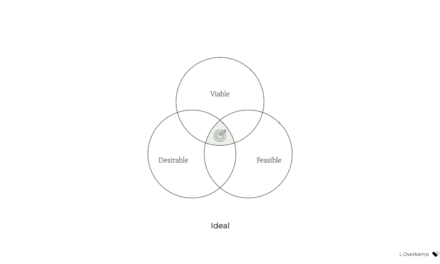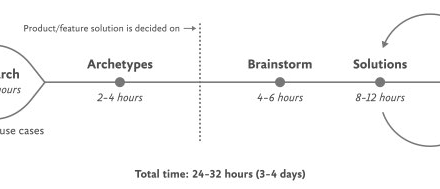Yup, the lack of sun rays can play a role here.
I’ll never forget the feeling of deep discomfort during a consultation for breast reduction surgery. The room in the plastic surgeon’s office was cold, and I felt self-conscious in the paper robe as I waited to see the doctor. I was 16 and made the appointment with my mom after a tearful trip to the mall. Whether shopping for prom dresses, bathing suits, sports bras, or basic T-shirts, I struggled to find clothes that fit my body and my style. Teen years are difficult for most, and I thought a dressing room was my own personal hell.
However, when the doctor finally did enter the examination room and started discussing how he could reshape my chest, I found myself in a fresh hell. Much of what he said is a blur, except for a few haunting phrases like “damaged nerves,” “potential loss of sensation,” and “the risk of not being able to breastfeed.”
I was most shocked, however, when the doctor insinuated that I could cite chronic back pain as a catalyst for the surgery to help secure financial assistance from my health insurance. While I was never the fittest or fastest in gym class, I was generally a healthy and active student. Between being in my high school’s marching band and a captain of my soccer team, I spent most evenings after school on my feet, whether I was in practice or on the field during a game day.
I didn’t have chronic back pain, only the curse of comparison between my body and the waif-like models in fashion magazines. I was faced with two options: go under the knife or learn to get comfortable as a bigger-bodied person.
Weighing the costs of cosmetic surgery
Breast augmentation was a fact of life in my family, as a few of my female relatives had the treatment. Even one of my parents’ friends, a medical professional, encouraged me to consider the surgery based on her own personal experience.
“It’s the best thing I ever did,” she told me. “I wish I did it sooner.” I imagined how it would feel to fit into clothing differently, and to look thinner without a curvy figure. This was the mid-2000s, and anti-fat bias reigned across media and pop culture.
Despite the friend’s positive endorsement, I decided to hold off the surgery for several reasons. Of course, I was scared of any potential complications and feared returning to that cold doctor’s office, unclothed from the waist up.
But, even more importantly, I also didn’t want to be out of commission for several weeks for necessary recovery. Even if I scheduled the surgery in the summer between school years, I would have to miss out on soccer camp, letting my team down. I would have to turn down invites to sleepovers and pool parties with friends, making precious members during a short-lived season before we all parted ways for college. I also feared comments from classmates or post-surgery. Surely they would notice that clothes suddenly fit me differently—a scenario that felt mortifying as a teenager.
I told myself I would reconsider later in life, maybe after I had kids and experienced breastfeeding. In my heart of hearts, I also romanticized the idea of falling in love with and marrying a man who accepted my body as it was naturally, without medical intervention.
Meeting myself on the yoga mat
In hindsight, I know now that I hadn’t yet learned to love and accept myself. My decision-making process revolved around what other people would think about my reconfigured body, rather than what I thought. That started to change when I enrolled in yoga as an elective course during college. After gaining weight as a freshman, I was feeling self-conscious when I laid down on my mat and listened to the teacher guiding the class through a body scan.
“The more we practice, the better we get to know ourselves in our bodies,” says Naomi Finkelstein, C-IAYT, a weight-neutral yoga therapist, health and wellbeing coach, a Be Body Positive facilitator, and founder of Well-Rounded Wellness. She explains that for someone struggling in the relationship with their bodies, it often has to do with seeing our bodies on the surface—as something that is supposed to look a certain way or be a certain size.
When we practice yoga regularly, however, we get to know ourselves in a deeper, more holistic way by being present in our bodies, learning about our experiences, and learning how to care for ourselves. “When I say that, I don’t mean I’m taking care of myself because I’m exercising,” Finkelstein. “I mean I’m taking care of myself by learning to notice what my body is feeling and honoring that.”
Amanda Marks, LPC, RYT-500, a licensed professional counselor, registered yoga teacher, and founder of Resilient Counseling, agrees, emphasizing the original definition of yoga means to yoke mind, body, and spirit. “When we struggle with body image or have a negative body image, we are often disconnected from our bodies,” she says. “We are in a society and a culture that encourages that disconnect. By connecting the mind or our body we are able to really get that connection re-established and start to focus on what it does for us—befriending it instead of being at war with it.”
By the end of the semester, I started to feel a shift—not just in my body but in my mind. With each chaturanga push-up and downward facing dog, I felt myself getting stronger. The mat-based exercises and appropriate attire were more approachable to me than running or high-intensity classes because I still struggled to find sports bras that provided adequate support. Yoga, however, helped me learn to stand up straighter, and feel more confident doing so.
“When you look at the roots of yoga and where it comes from and what it is intended for, it is truly for everybody.” —Naomi Finkelstein, C-IAYT
Finding the right fit
To encourage students of all different body types, Finkelstein teaches classes that are gentle and invitational. Informed by her own experience as a person in a bigger body, she provides many options and reminds her students they are in charge of making choices that best suit them. She intentionally chooses phrases such as, “If you felt like it, you could do this, or if you want to, you could do this. Maybe try both and see which one feels better to you.”
Finkelstein points out that there are many different styles of yoga. Iyengar, for example, is more strictly focused on a very specific alignment and may be less accessible to some bodies. “Yoga is presented in the West as this outcome-based practice where you are trying to achieve certain postures and make your body do certain things,” she says. While picture-perfect postures on Instagram may make some people think yoga isn’t for them, Finkelstein aims to correct this thinking.
“When you look at the roots of yoga and where it comes from and what it is intended for, it is truly for everybody,” Finkelstein says. “There’s so much more to do than just the movement. It’s an entire philosophy and way of helping us to lead a happier life.” For someone experiencing low body image, Finkelstein suggests beginning with a low-stakes, restorative class or a one-on-one session instead.
“The slower, the better,” Marks adds. She recommends finding a studio where body diversity is represented, the use of props is encouraged and instruction is not just solely focused on the aesthetics of what you look like or try to achieve the peak pose, but on all eight limbs of yoga—not just the physical asana.
A lifelong practice
A decade later, I have not undergone cosmetic surgery, but societal pressures linger and intrusive thoughts of negative body image occasionally rear their ugly head. My dream of meeting and marrying a man who loved me as me came true, and yet, when it came time to try on wedding dresses, I felt the familiar dread of confronting the dressing-room mirrors.
This time, however, I knew the antidote. By committing to my yoga practice, I felt strong and comfortable in my body when I walked down the aisle. Most importantly, I felt—and looked—like myself.
As I’ve grown from a college student in her first Vinyasa class to a woman in mid-30s, I’ve realized that body acceptance and my yoga practice will be life-long journeys. Finkelstein, who first started practicing as a high-school student, echoes the sentiment. “As a person in a bigger body, my body has changed pretty dramatically over the course of the past couple of decades,” she says. Ultimately, she believes understanding the visceral feeling of practicing in different bodies with different limitations has helped her as a teacher.
Some days we feel like doing something, and other days we don’t, Finkelstein says. Regardless of the reason why, she emphasizes the importance of exercising the agency of choice, rather than giving into internal or external pressures.
“Sometimes it’s good to choose not to do something, just because you can,” Finkelsetin explains. “You can just say, ‘I’m not going to do that,’ just to practice. I do think that so many people, myself included, experience pressure to do what is being offered, but remembering that we’re in charge of our own bodies and we can do whatever the hell we want to do is very important and empowering.”
As the saying goes, who we are on the mat is often a microcosm of who we are off the mat. “A body-acceptance journey doesn’t mean we’re always going to love our bodies and feel great,” Marks says. “It’s more about treating it with kindness, and that can be the same with yoga.”
3 yoga modifications for people with larger bodies
Below, Finkelstein demonstrates modifications for three popular yoga poses that may be helpful for people in bigger bodies. Whether you’re new to yoga or a long-timer searching for adjustments that work with your body, give these moves a try during your next yoga session.
1. Child’s pose (Balasana)
- Begin on your hands and knees in tabletop position and take a deep breath in.
- Exhale and sink your hips back onto your heels, spreading your knees wide enough apart to fit your torso between your thighs.
- Inhale and reach your arms forward slightly to lengthen your spine. Then, press your forearms into the floor.
- Exhale and relax your entire body down into the floor as much as you can.
2. Downward dog (Adho Mukha Svanasana) to lunge
- With each hand on a yoga block (on its lowest setting), start in a high plank position with your body in a straight line from your head to your toes and your hands directly under your shoulders.
- Lift your hips up and back so your body forms an inverted “V.”
- Lower your hips back down to high plank position, then lower your knees to the floor.
- Step your right foot forward into a lunge position and place one yoga block outside of your right foot and one yoga block inside of your right foot (on its highest setting). Place your hands on top of the yoga blocks.
- Extend your left leg out behind you and rest your left knee on the floor.
3. Seated spinal twist (Bharadvajasana)
- Sit cross-legged on the floor with your palms resting on top of your knees. Sit tall with your shoulders back.
- Place your left hand on the floor behind your left hip.
- Then, rotate your torso as far to the left as you can.
- Place your right palm on your left knee to deepen the stretch.
- Hold for a few breaths, then return to the starting position.
- Repeat on the opposite side.
Recommended Story For You :

The alpine secret for healthy weight loss

The Most Potent Fast-Acting Formula For Incinerating Stubborn Fat

Real Cortexi Users Real Life‑Changing Results

This Cold Drink Might Trigger Your Prostate

Red Boost is a powerful new formula for boosting male sexual health.

Everything you eat or drink eventually reaches your liver for processing.

Brand New Probiotics Specially Designed For The Health Of Your Teeth And Gums

Empowering You to Take Control of Your Blood Sugar Health!

Scientists Finally Discover the Root Cause of Belly Fat and Unexplained Weight Gain






